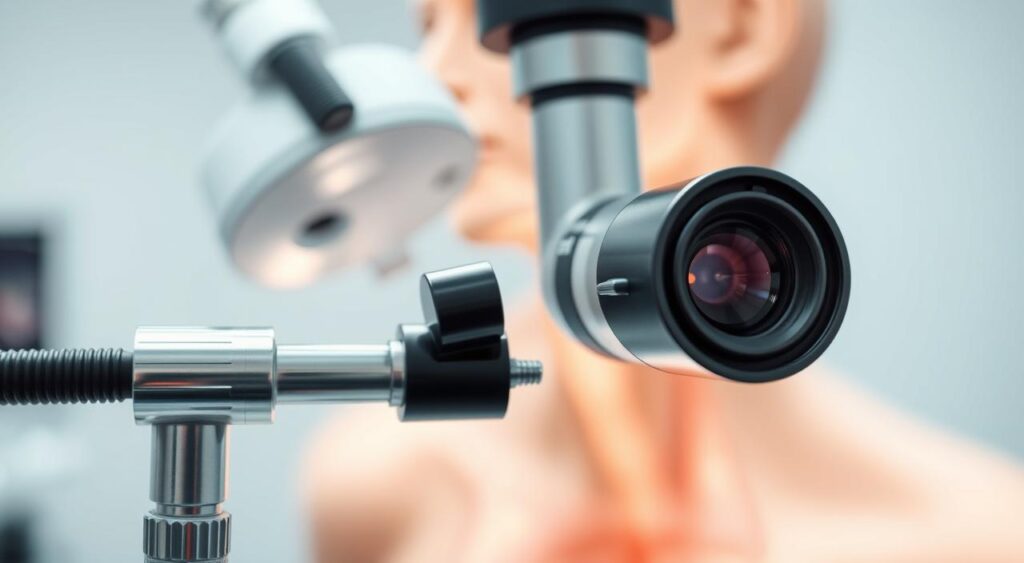Did you know that nearly 1 in 10 adults in the United States will develop an anal fissure at some point in their lives? This common, yet often embarrassing, condition can cause significant discomfort and impact your quality of life. As an expert in this field, I’m here to provide you with a comprehensive guide on understanding, managing, and preventing anal fissures.

Anal fissures are small, painful tears or cracks in the lining of the anus. They can occur due to a variety of factors, from constipation and straining during bowel movements to certain medical conditions. While they may seem like a minor issue, these fissures can lead to significant pain, bleeding, and even chronic discomfort if left untreated.
Key Takeaways
- Anal fissures are a common condition affecting up to 10% of adults in the United States.
- Causes include constipation, straining during bowel movements, and certain medical conditions.
- Symptoms include pain, bleeding, and discomfort during and after bowel movements.
- Diagnosis involves a physical examination and, in some cases, additional tests.
- Treatment options range from lifestyle changes and topical medications to surgical interventions.
- Preventive strategies, such as dietary modifications and improved hygiene, can help reduce the risk of developing anal fissures.
- Seeking prompt medical attention is crucial for effective management and healing.
Understanding Anal Fissures: Definition and Overview
Anal fissures are small, painful tears in the lining of the anus, also known as the anal canal. These tears happen when the skin around the anus gets damaged. This usually occurs during hard or painful bowel movements. Such tears can cause a lot of rectal pain and make simple tasks hard.
Anal fissures affect people of all ages and genders. In fact, up to 1 in 10 people might get an anal fissure at some point. These small tears can greatly affect one’s life, making anal tear and bowel function hard.
Knowing about anal fissures is key to treating and preventing them. By understanding symptoms and risk factors, people can take steps to fix the issue and feel better.
“Anal fissures may be small in size, but their impact can be quite significant. Proper diagnosis and treatment are essential for restoring comfort and a healthy bowel function.”
In the next parts, we’ll look at what causes anal fissures, their symptoms, and how to manage them. This guide aims to help people understand and tackle this common but often ignored condition.
Common Causes and Risk Factors
Anal fissures can come from many sources, like diet, health issues, or injury. Knowing what causes them helps find and fix the problem.
Dietary Factors and Lifestyle Habits
Constipation and hard stools are big causes of anal fissures. Eating less fiber and not drinking enough water can make stools hard. This can hurt the skin around the anus. Also, straining or sitting too long on the toilet can raise the risk.
Medical Conditions That Increase Risk
Some health issues can make you more likely to get anal fissures. For example, inflammatory bowel diseases like Crohn’s and ulcerative colitis can cause long-term irritation. Being pregnant, giving birth, or having chronic diarrhea also increases the risk.
Physical Trauma and Other Causes
Getting hurt in the anal area, like from wiping too hard or anal sex, can cause fissures. Sometimes, it’s just a muscle spasm or not enough blood flow. This can stop the area from healing well and lead to a fissure.
| Cause | Description |
|---|---|
| Constipation | Passage of hard stools can damage the delicate skin around the anus. |
| Inflammatory Bowel Diseases | Conditions like Crohn’s disease and ulcerative colitis can lead to chronic anal irritation. |
| Diarrhea | Frequent, loose bowel movements can also contribute to the development of anal fissures. |
| Physical Trauma | Excessive wiping, anal intercourse, or prior anal surgery can cause injury to the anal area. |
Finding out why someone has an anal fissure is key to treating it. By changing diet, managing health, and avoiding injury, people can lower their risk.
Recognizing the Signs and Symptoms
Anal fissures show different symptoms that help people know they have one. These include bleeding during bowel movements, persistent anal itching, and a burning sensation. These signs often mean you have an anal fissure.
Pain during and after bowel movements is a common symptom. This pain can be mild or very sharp and last a long time. You might also feel a burning or stinging in your anal area, making things worse.
Bleeding during bowel movements is another key sign. This blood is usually bright red and can be seen on the toilet paper, in the bowl, or on your stool. Seeing blood can be scary, but it’s often because of small tears in your anal tissue.
Some people with anal fissures also get persistent anal itching. This itching is uncomfortable and can be frustrating. It’s caused by irritation and inflammation in the affected area.
The severity of these symptoms can vary. Some people might only feel a little discomfort, while others might have more severe pain. No matter how bad it is, it’s important to see a doctor to get it checked and treated.
| Symptom | Description |
|---|---|
| Bleeding during bowel movements | Bright red blood on the toilet paper, in the toilet bowl, or on the surface of the stool |
| Anal itching | Persistent, uncomfortable itching in the anal region |
| Burning sensation | A stinging or burning feeling in the anal area, especially during and after bowel movements |
| Pain during and after bowel movements | Ranging from a mild ache to an intense, sharp pain that lingers |
By knowing these common signs and symptoms, you can start looking for medical help. This is the first step to dealing with your discomfort and finding a solution.
Diagnosis and Medical Assessment
Diagnosing anal fissures needs a detailed check-up by a doctor. This includes a physical exam and tests to find out why it happened.
Physical Examination Process
The doctor will look at the anal area to see if there’s a fissure. They might do a digital rectal exam. This means they gently put a gloved, lubricated finger in the rectum to check for anything unusual.
Diagnostic Tests and Procedures
More tests might be needed to understand the condition better. These could be an anoscopy or a colonoscopy. An anoscopy uses a small, lighted tool to look at the anal canal. A colonoscopy looks at the whole colon and rectum.
Differential Diagnosis
Doctors need to tell apart anal fissures from other issues like hemorrhoids or abscesses. They look at the symptoms, medical history, and test results. This helps them make the right diagnosis and treatment plan.

“Proper diagnosis is crucial for effective treatment of anal fissures. Healthcare providers must carefully examine the patient and utilize appropriate diagnostic tools to ensure an accurate assessment.”
Non-Surgical Treatment Options
Managing anal fissures often starts with non-invasive treatments. These methods help ease symptoms and aid in healing without surgery. Let’s look at some effective ways to treat anal fissures.
Lifestyle and Dietary Changes
Softer stool and less straining are key in treating anal fissures. Making dietary and lifestyle changes can help:
- Eat more fruits, vegetables, and whole grains to boost fiber. Fiber supplements can also help.
- Drink lots of water to stay hydrated.
- Avoid foods and drinks that can cause constipation, like dairy, caffeine, and alcohol.
- Take your time and avoid straining when you go to the bathroom.
Topical Treatments and Home Remedies
There are also topical treatments and home remedies for anal fissures:
- Sitz baths relax the anal muscle and improve blood flow, aiding in healing.
- Use over-the-counter creams or ointments with hydrocortisone or nitroglycerin to reduce inflammation and pain.
- Apply a warm compress to the area for soothing relief.
While these methods can work well, some cases might need more treatment. Always talk to a healthcare professional to find the best treatment for you.
“Incorporating dietary changes and topical treatments can often resolve anal fissures without the need for surgery.”
Medications and Topical Treatments
Medication and topical treatments are key in managing anal fissures. They help with muscle spasms, inflammation, and pain. This makes it easier to heal.
Prescription Medications
For serious cases, doctors might prescribe certain drugs. Nitroglycerin ointment relaxes the anal muscle. Calcium channel blockers also help with muscle spasms. Sometimes, stool softeners are used to make bowel movements easier.
Over-the-Counter Solutions
For mild cases, over-the-counter options are good. Creams or ointments with hydrocortisone reduce inflammation. Numbing agents help with pain. Always check with a doctor before using these products.
Pain Management Approaches
Doctors also suggest ways to manage pain. Warm sitz baths relax the anal muscle and improve blood flow. Over-the-counter pain relievers like acetaminophen or ibuprofen are also recommended.
Using a mix of these methods can help patients find relief. It supports the healing process and reduces discomfort from anal fissures.
Surgical Interventions When Necessary
When treatments like diet changes and creams don’t work, surgery might be needed. These surgeries aim to fix the fissure’s root cause for good.
Lateral internal sphincterotomy is a common surgery. It cuts part of the anal muscle to stop spasms and help the fissure heal. This method works well, with success rates up to 95%.
Fissurectomy removes the damaged tissue and reshapes the anal canal. It’s good for long-lasting fissures. Sometimes, botox injections are used too to relax the muscle and aid healing.
Surgeries can have risks like bleeding, infection, and incontinence. It’s important to talk about these risks with your doctor before making a decision.
“Surgical intervention should be considered when conservative treatments have failed to provide relief or when the fissure is particularly severe or chronic in nature.”
Choosing between surgery and non-surgery depends on your situation and what your doctor suggests. Looking at all options can help find the best way to fix your fissure and get lasting relief.
| Surgical Procedure | Success Rate | Potential Risks |
|---|---|---|
| Lateral Internal Sphincterotomy | Up to 95% | Bleeding, Infection, Incontinence |
| Fissurectomy | Variable | Bleeding, Infection, Incontinence |
| Fissurectomy + Botox Injections | High | Bleeding, Infection, Incontinence |
Prevention Strategies and Lifestyle Changes
To prevent anal fissures, start with healthy habits. Simple changes in diet, hygiene, and exercise can help a lot. These steps can lower your risk of getting this painful condition.
Dietary Modifications
Eating more fiber is key for regular bowel movements and avoiding constipation. Add fruits, veggies, whole grains, and legumes to your diet. Also, drink lots of water to stay hydrated.
Hygiene Practices
Good toilet habits are important. Avoid straining or sitting too long on the toilet. This can make fissures worse. Clean gently with soft, moist toilet paper after using the bathroom.
Exercise and Activity Guidelines
Exercise helps keep your bowels regular and prevents constipation. Try walking, swimming, or yoga. But, avoid heavy lifting or high-impact sports that can strain your anal area.
By changing your lifestyle a bit, you can prevent anal fissures. This keeps your digestive system healthy and comfortable.

| Dietary Recommendations | Hygiene Practices | Exercise Guidelines |
|---|---|---|
| Increase fiber intake Drink plenty of water Avoid constipating foods | Avoid straining during bowel movements Gently clean the anal area Practice proper toilet habits | Engage in regular physical activity Avoid high-impact exercises Maintain a balanced exercise routine |
“Preventing anal fissures is all about creating a healthy environment for your digestive system. By making a few simple lifestyle changes, you can significantly reduce your risk and maintain a comfortable, pain-free experience.”
Recovery Timeline and Healing Process
Getting better from an anal fissure takes time, but with the right care, it can go faster. Knowing what to expect helps set realistic goals and ensures a good outcome.
The wound healing for anal fissures usually follows a set path. Treatments like diet changes, creams, and sitz baths can heal fissures in 4-8 weeks. But, if fissures are bad or keep coming back, surgery might be needed to stop them from happening again.
After surgery, like fissurectomy or botox, it takes 2-4 weeks to get better. Patients must follow their doctor’s advice closely. This includes taking care of the wound, managing pain, and slowly getting back to normal.
To help wounds heal and avoid scar tissue formation or recurrence, patients should:
- Eat a high-fiber diet and drink plenty of water
- Avoid pushing too hard during bowel movements
- Clean the area gently and use any creams as directed
- Go to follow-up visits to check on healing and talk about any issues
By knowing the usual recovery time and following advice, people with anal fissures can help their healing. This way, they can work towards a lasting fix for their problem.
Conclusion
Anal fissures can be frustrating and sometimes hard to get rid of. But, with the right care, most people can feel better and live better lives. Knowing what causes them and getting help early is key to healing.
Doctors offer many ways to treat anal fissures, from simple steps to surgery if needed. Making healthy choices, eating right, and keeping clean can help a lot. These actions help prevent and manage the problem.
It’s important to see a doctor if you think you have an anal fissure. With the right treatment and care, you can feel comfortable again. Taking care of your health is the first step to getting better.
FAQ
Q: What are anal fissures?
A: Anal fissures are small, painful tears in the anus lining. They can cause discomfort, bleeding, and bowel movement issues.
Q: What are the common causes of anal fissures?
A: Constipation, diarrhea, or straining can cause anal fissures. They can also be linked to certain diseases or pregnancy.
Q: What are the typical symptoms of an anal fissure?
A: Symptoms include sharp pain during and after bowel movements. You might also see bleeding, itching, and a burning feeling in the anal area.
Q: How are anal fissures diagnosed?
A: A healthcare provider will usually diagnose anal fissures through a physical exam. They might also do additional tests like an anoscopy or digital rectal exam.
Q: What are the non-surgical treatment options for anal fissures?
A: Non-surgical treatments include changing your diet and staying hydrated. Good bowel habits are also key. Topical creams or ointments might be suggested.
Q: When are surgical treatments necessary for anal fissures?
A: Surgery, like lateral internal sphincterotomy or fissurectomy, is considered if other treatments fail. It’s also needed for chronic or severe fissures.
Q: How can anal fissures be prevented?
A: Eating a high-fiber diet and staying hydrated can help prevent fissures. Good toilet habits and regular exercise also support anal health.
Q: What is the typical recovery timeline for anal fissures?
A: Recovery time varies based on the fissure’s severity and treatment. Most heal in 4-6 weeks with proper care. But, some may need more time or extra treatments.
